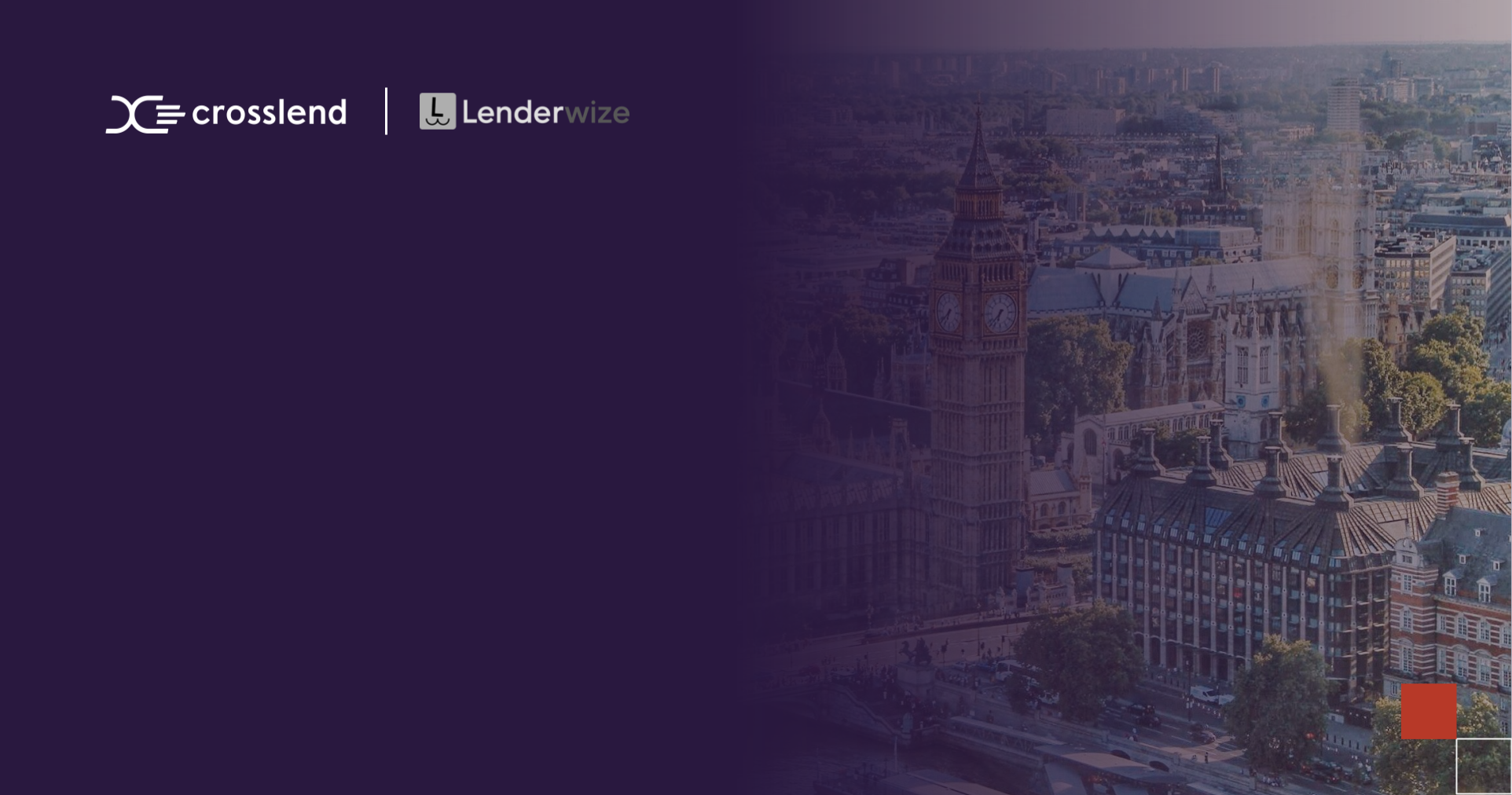Risk scoring: How investors can assess digital lenders
Risk scoring is at the heart of many lending approaches. The regulations that govern digital lending are typically less stringent than those in the banking space. This makes it even more essential for potential investors to analyse how a credit platform is pricing and managing risk, believes Miguel de Abreu Alves, Risk Officer at CrossLend.
Hi Miguel, can you please give an introduction to your background?
Prior to joining CrossLend, I had been working in banking for eight years in the area of risk management. I initially worked as a Credit Portfolio Risk Manager at Deutsche Bank for four years in Portugal, then I shifted to Banco BNI Europa, eventually becoming Head of Risk and Internal Control. At BNI, we were looking at peer-to-peer platforms, or digital lenders, and one of the greatest challenges we met was that all these digital lenders had their own scoring models and their own ways of measuring the risk they believed their borrowers posed. This obviously is a challenge for investors.
How do digital lenders compare with traditional banks in this regard?
Comparing banks to digital lenders, one of the main differences in their business models is the regulatory aspect. Banks continually face increasingly stringent regulatory requirements that end up affecting their exposure across all loan classes – consumer, business, mortgage. For example, one of the latest challenges banks faced with regard to their lending operations was the directive from the European Banking Association (EBA) on loan origination and monitoring. These guidelines, which were published in 2020, detail the framework that banks are required to implement in the loan underwriting process. The guidelines provide instructions on internal governance, loan origination, pricing, the valuation of collateral, among other processes. One critical aspect to point out is that banks’ legacy systems issues have been a significant obstacle when adapting to this new regulation. This is especially true among banks that have been established in the market for a long time. As a result, banks have been investing heavily in adapting their systems, databases, policies and processes to meet these new requirements. It truly is a never-ending process.
Meanwhile, on the digital lenders’ side, the EU crowdfunding regulation that came into effect in November 2021 set minimum requirements that peer-to-peer platforms must meet. It also governs the credit risk assessment process. Recently, both EBA and the European Securities and Markets Authority (ESMA) have been drafting technical standards on a number of topics, which will eventually be adopted. We have observed that the terms under consultation and those which have been discussed with market players are far less stringent than the terms which apply to banks. It seems that such regulations are more focused on protecting investors in crowdfunding.
In that sense, banks in Europe are obviously obliged to meet much more stringent regulations than peer-to-peer lenders. But in the end, both banks and digital lenders share the same goal: a desire to automate their data collection processes as much as possible to improve the quality of their underwriting while reducing business costs. And this is a particularly important point for the risk scoring topic, because collecting data points (such as income, assets, liabilities, borrowing history, even tax data and other publicly available information) has become the primary basis for building accurate and efficient risk rating models.
How do these differing requirements affect the target markets or borrower segments?
In terms of pricing, banks can target lower risk profiles for borrowers because they have a lower cost of funds (COF). Looking at business borrowers, especially micro, small and medium enterprises (SMEs), we see that there are some market segments that banks just do not provide their services to. There are real market niches that banks are not interested in, either because some are typically riskier segments or because of the economics involved. When you look at the micro and small business segments, these borrowers are usually not looking for bigger tickets but rather smaller loan amounts, and banks often do not provide loans at this size. For example, a bank may have a minimum business loan amount of 100,000 euros, but a small business may be looking for a working capital loan in the range of 50,000-60,000 euros. We see a lot of digital lenders focusing on this segment. It’s not microfinance, but it’s a segment that’s often not well served by traditional banks.
It’s an important area of the market. And in turn, digital lenders also need investor funding to grow their capital base or lower their COF. But how can investors – whether they are investing directly or via a fund – assess the quality of the risk processes of a digital lender?
Investors are highly dependent on the quantity and quality of the data that a lender is able to share with them. Some lenders have well-structured data to provide, while others make use of robust solutions. For example, CrossLend’s Data Suite supports originators with data management, analytics, and reporting. Typically, one of the most important focus points for an investor will be the loan book, since it’s obviously important to make assumptions about the historical performance and the expected future development of the loan book. Investors are also looking for ways to standardise their approach and analysis, but often they are dependent on what data the originator can supply; if the data is inefficiently structured then doing a proper analysis can add a lot of operational cost to an investment, which of course is one of the pain points for this segment of the market, especially for smaller ticket sizes. At CrossLend, we use a model to recreate the payments over time, which allows us to calculate default rates, recovery rates, net yields, and concentration rates in terms of countries, activity sectors, risk segments or even loan purposes. These are all important pieces of information, particularly for the SME segment.
When looking at a digital lender’s scoring model, our approach focuses initially on qualitative metrics, which means we go through the actual loan origination data in order to see how the lender segregates different risk segments. But we also carry out a quantitative analysis to see if the lender’s scoring model actually works. We do this by measuring whether they have been pricing credit risk correctly over time. For example, if a given lender has four risk segments – A-B-C-D – we expect to see higher default rates (and consequently higher interest rates) for rating D than for rating A. So we look at these and see if everything fits the expected development. Such analyses can be particularly relevant for the investment approach, as investors may also be looking to only target certain segments with a specific lender.
As you mentioned, banks have a much higher regulatory burden than digital lenders. So how can digital lenders generate confidence for investors that their approach to risk is robust enough?
The landscape in the EU was covered by disparate national level legislation until the regulation on European Crowdfunding Service Providers (ECSP) for business came into effect late last year. But regardless of regulatory requirements, digital lenders were already coming to understand the needs that potential investors (banks, insurance companies, funds) were eager to see fulfilled prior to formally instituting a business relationship. Lenders obviously then moved towards meeting such requirements. Subsequently, nowadays it is common to see lenders with robust risk frameworks. They typically have policies and procedures in place with a clear segregation of duties, and those effectively establish a standard for investors. This fact, combined with a solid track record, supported by both historical performance and the management’s level of experience, is what ends up generating confidence in the market.
How important is a lender’s track record when it comes to assessing their risk management?
As mentioned, one logical approach investors may use is to filter digital lenders by their experience in the market and exclude newer platforms. But we see a wave of new digital lenders that have entered the market, which are operating to a very high standard with good assessments of the market, their niches, and their potential risk-adjusted return rates. Therefore, it may be better for investors to allow for a shorter track record, say one or two years, and focus more sharply on their scoring approach and risk management principles. Other indicators can also help establish an opinion on a platform. For example, investors usually find it imperative to look at the management team’s background and engage with some key leaders within the company, such as the CEO, the Head of IT, or the Head of Risk. Doing so allows investors to examine how the leadership’s experience might affect the lender’s performance. In the specific case of lenders with a short track record, it is usual to apply additional risk mitigants on an investment, such as first-loss options or buy-back clauses.
From your experience with analysing digital lenders, both at CrossLend and before, what is your view on standards in the industry generally? Are they improving? Are there some areas that need improvement?
I have been working closely with digital lenders for the last four years, and in my opinion, the standards are definitely improving. Nowadays, it’s hard to find a peer-to-peer platform that does not comply with the ‘minimum standard’. When we began investing in digital lenders in 2017-18, we saw a lot of digital lenders that were simply a work in progress. Such lenders had started granting loans, but they still had a few pieces missing from the puzzle. Overall, I now see the industry as being more mature, especially as lenders tend to have better infrastructure and procedures in place, such as their scoring models. The global investor panorama has also helped this increasing sophistication, as they have had a role in influencing lenders’ business models. Also, from a market perspective, I see digital lenders as being more aware and conscious players, targeting the right segments and not trying to grow too quickly. Something we noticed with digital lenders in the past was that they were too focused on increasing their numbers – for example, setting unrealistically high origination targets.
Nevertheless, there are definitely areas that require some improvement. The adjustment to the new EU regulation will help to draw an additional line in terms of a few standards, like governance, conflicts of interest, and the disclosure of key information for investors.
You mentioned that you’ve identified a wave of newer digital lenders. What has been the impetus for them to enter the market?
My view is that the regulation faced by banks has been the major factor influencing this. Many banks have had to scale back lending in specific areas due to a lack of funding coupled with increasing capital ratios. Even when loan portfolios have performed well, many banks have had to make strategic decisions and pull back in some areas. The low interest rate environment meant that even well-performing portfolios with low default rates were not especially profitable for the banks due to the capital requirements they face.
Digital lenders don’t have that burden and, as such, they are able to target underserved markets and price segments differently. There are also marketing aspects that promote that impetus – here in Portugal, we have seen that new retail borrowers would rather go to a digital lender for a consumer loan than a traditional bank. They know that the processes in banks are lengthier and bureaucratic, whereas these customers value the experience they get through a digital lender. However, as I mentioned already, in the business segment, smaller businesses may simply not have a choice – banks are not able to service them appropriately.
Looking at the investor base, what do you think are their biggest concerns with respect to digital lenders? How important is this question of pricing risk?
Broadly speaking, we generally see two types of investors. There are those more experienced in the private debt asset class, that know how the market works and are interested in specific segments of the market or products. They tend to look at the segregation of the market in terms of different risk classes, maturities, vintages, and so forth. Then there are those who approach the market via a fund or through bigger investment opportunities where the risk is shared with other investors. This type of investor may be looking more closely at the proposition in terms of the rate of return and the monthly yield on a global basis.
One of the concerns that investors commonly raise is the resilience of digital lending portfolios when facing an economic downturn, since digital lenders are not usually mature enough to have witnessed very adverse market deteriorations such as those witnessed during the financial crisis of 2007-2009. However, we saw that although the COVID-19 pandemic had major negative impacts on most asset classes, it was not really all that eventful for peer-to-peer platforms. We can argue that this trend emerged partly due to the recovery schemes that were supported by European governments at the end of 2020. Still, we also observed that borrowers, namely SMEs, quickly bounced back to their regular payment schedules without significant effort.
In the end, from a risk perspective, factors like diversification in terms of exposure to countries or market sectors, as well as a solid post-investment risk management and monitoring frameworks, are essential. Coupled with careful screening of originators, analysis of their scoring models to ensure they are pricing risk correctly and the illiquidity premium inherent in the asset class should help to reduce volatility, which is naturally important to investors.
This article should not be construed as investment advice, or relied upon by anyone as legal, accounting, compliance or tax advice, or for any other purposes. This article is not to be construed, under any circumstances, by implication or otherwise, as an offer to sell, nor as a solicitation to buy securities.
Related articles
Securitisation: active management option to boost Luxembourg hub
The overhaul of Luxembourg’s securitisation laws introduced a number of changes, notably allowing for active management and a broader [...]
Originator Spotlight/Lenderwize
A fast-growing trade finance platform, Lenderwize specialises in invoice financing in the digital economy. Currently its platform provides its [...]
Digital lending emerges as an important sub-segment of private debt
Amid increasing breadth within the private debt asset class, specialised investors can allocate capital to sub segments in a bid [...]







